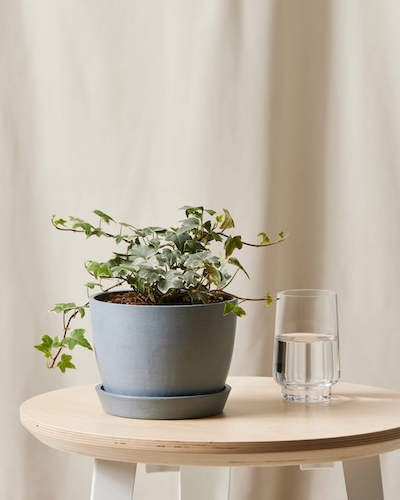Nothing complements home decor better than the perfect houseplant…or two or three! But houseplants are more than just a pretty face. The benefits of houseplants make adding them to your home a no-brainer – as long as you actually remember to water them.
If you’ve been hesitant about becoming a vegan parent (childcare is a huge responsibility, after all) due to intimidation or lack of knowledge – I’ve got you covered.
I spoke with Bloomscape horticulturist Lindsay Pangborn, and Shayla Cabrera, owner of Tia Planta (a plant shop in Jersey City, NJ), to find out everything we need to know about houseplants and which ones we need to complement our home.
Why does your home need it?
I’ve said it once, and I’ll say it again because it matters: Houseplants are more than just pretty things to look at. Unless it’s fake, in which case, that’s it. It actually offers health, lifestyle and décor benefits that make it a must.
Pangborn explains, “Plants have the ability to absorb toxins from the air and purify your spaces. Studies have shown that they can lower stress levels, increase focus, productivity, and improve creativity.” They also help encourage owners to create care procedures that can improve wellness and structure in our lives.
And of course, being able to personalize your home and turn it into your own oasis is a plus too. “With such a diverse group of plants, plant owners are able to choose a type, size or care preference that suits their lifestyle and decor,” says Pangborn. But with so many options out there, where do you start? Here are the plants you should consider bringing into your home, based on your space and experience:
If you have zero experience
For true beginners, Cabrera highly recommends the ZZ plant because it is “one of the most durable houseplants and great for beginners.” They are the type of plant that can do well with a little bit of sun, she explains. While all houseplants need some sunlight, “these babies are the best choice for low-light homes.” It also needs infrequent watering which makes it ideal for even the busiest of people.

If you already know that you will not stick to the watering schedule
Frightened by needy plants? The snake plant will be your best friend. Cabrera explains, “These plants are the most tolerant in the houseplant world. They are low light tolerance and require a thorough watering about once every 3-4 weeks which makes them ideal for a mobile plant parent.” Snake plants come in all sorts of easy-to-care-for varieties that he says Cabrera They make it so much fun to collect and place throughout your space.

If your house does not have windows
Is your home lacking natural light? While you might think these spells are doom for your plants, there are actually tons of plants that can thrive (not just survive) in low light. Cabrera recommends Pothos, a fast-growing, low-light-tolerant plant, which she says never goes out of fashion. Not only is it easy to put off, but it provides a generous vibe that adds dimension and detail to any space!

If your house gets a ton of light
Hanging plants in your windows is an excellent way to add elegance, ambiance and greenery to your home. They will draw the eye upward while also increasing your space. For these spaces, Pangborn recommends trailing plants like English Ivy, which can naturally “leak” and move around as their vines bloom. Just make sure your ivy has plenty of indirect light and not direct sunlight. English ivy needs water when 25%-50% of the soil volume is dry (tip: if you stick your finger in the soil, the top quart in half will feel dry if it needs water), and per bangborn, “be sure to spray with room-temperature water.” to stick to your preferred humidity levels.”

If you don’t have enough space
Have no idea where to put a plant in your small space? Pangborn recommends growing upwards to get the most out of what you have. She suggests tall, narrow plants like Dracaena Marginata Open Weave that can “create a subtle, abstract silhouette.” She explains that this plant does well in low to medium light and can thrive just about anywhere. It is a low maintenance plant and only needs watering when about 75% of the soil volume is dry.

If you like a little drama
Looking to raise the bar and add some drama to your home? Check out Monstera Deliciousa. Cabrera says this plant “definitely brings a jungle vibe to any home.” It gives a nice show with its large leaves that are full of holes, and it works best in bright light. Cabrera also says he’ll be “the star of the show for your guests.”
Another dramatic option is Whale Fin Sansevieria, which Pangborn says can make a serious statement with its uniquely designed wide leaf. This plant is actually drought tolerant which means it only requires watering when it’s 100% dry – perfect for those of us who tend to forget! Additionally, she says, “It tolerates a wide range of temperatures, humidity, and light levels, and thrives most in bright, indirect light.”








